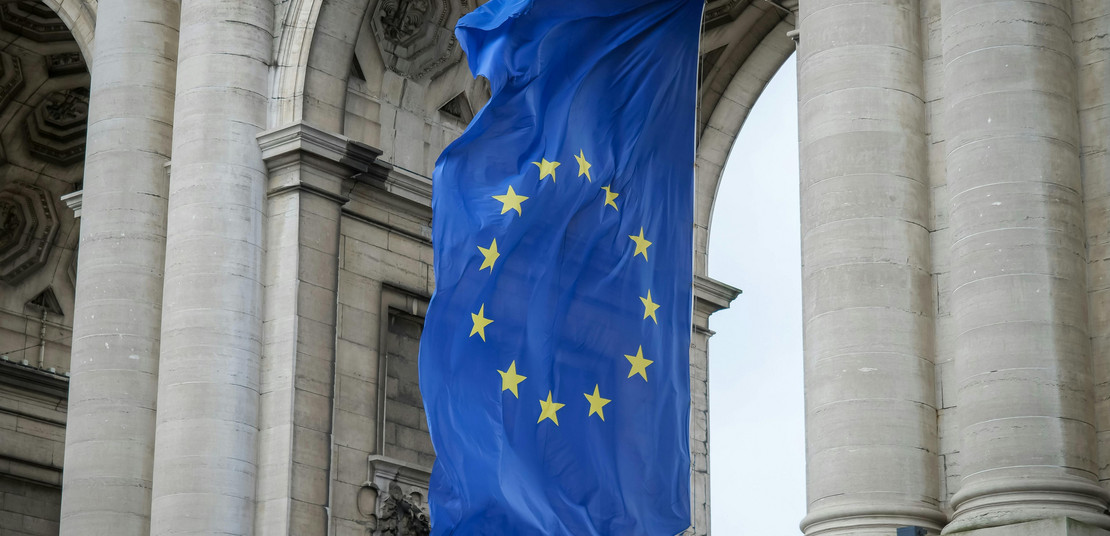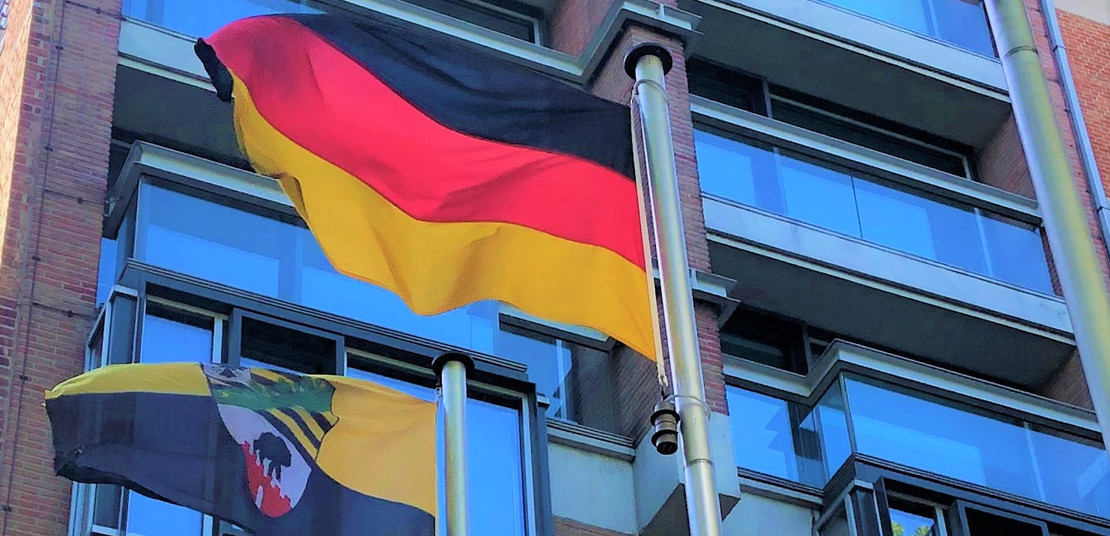European Agricultural Fund for Rural Development (EAFRD)
The priorities of EAFRD funding are as follows:
- strengthening the links between agriculture, food production and forestry as well as research and innovation, including for the purpose of improving environmental management and Performance
- Improving the economic performance of all farms and facilitating farm restructuring and modernisation, notably with a view to increasing market participation and orientation as well as agricultural diversification
- Supporting farm risk prevention and management
- Restoring, preserving and enhancing biodiversity, including in Natura 2000 areas, and in areas facing natural or other specific constraints, and high nature value farming, as well as the state of European landscapes
- Improving water management, including fertiliser and pesticide Management
- Preventing soil erosion and improving soil Management
- Fostering carbon conservation and sequestration in agriculture and forestry
- Fostering local development in rural areas (LEADER and CLLD)
- Enhancing the accessibility, use and quality of information and communication technologies (ICT) in rural areas (developing broadband)
For the 2014-2020 funding period, Saxony-Anhalt has approximately 859.3 million euros of EAFRD funding at its disposal.
In the following we present you two reference projects.
Biotopia is no utopian dream
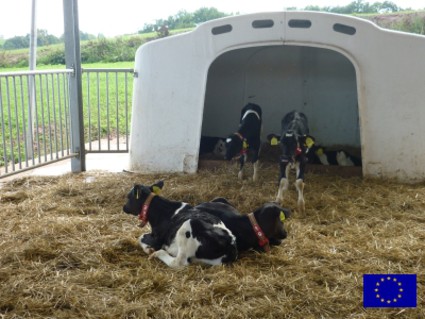
Organic farming works thanks to raised consumer awareness and the support of the European Union
- by Grit Gröbel -
The European Agricultural Fund for Rural Development (or EAFRD) promotes sustainable measures to improve the competitiveness of the agricultural and forestry sector, and is aimed at increasing the quality of life in rural areas. These are two of four funding priorities that are also applied in Saxony-Anhalt. The European Union supports our state with around 904 million euros from the EAFRD. The measures designed to improve competitiveness include supporting the Greifenhagen farming business 'Biotopia'.
Biotopia: within a civil-law company, the Anthes family runs an animal and crop farm as well as a nursery; the organic products are directly marketed by the partner companies Klaus Feick and Birgit Rufer. Their competitiveness is supported by means of funding. And this is also due to the fact that ecological farming involves more cost intensive activity. The funding allows this activity to be organised more efficiently. For example in livestock farming. The youngest calves grow up on the farm in calf boxes. They were bought to increase the quality of the farmers' work and the efficiency of the business. The youngest staff member at 'Biotopia' looks over the calves several times a day.
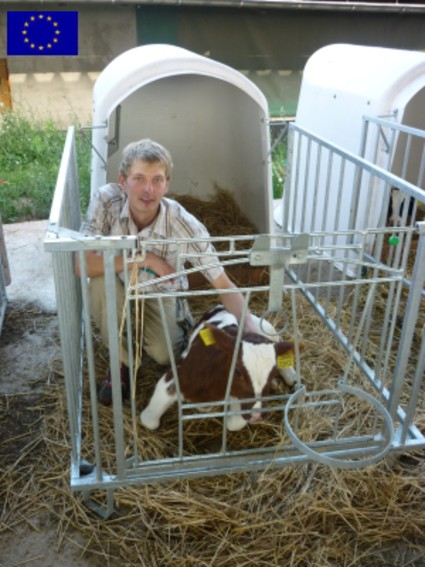
Marcel Bröse is a fresh agricultural engineering graduate. Having studied organic farming as a field of study at university, he deliberately chose to begin his career in Greifenhagen. He comes from the area and is able to utilise his knowledge on how ecological farming works. Still only in his early twenties, he and his boss Werner Anthes complement each other well. Werner Anthes has been working in agriculture for 40 years. "From a business point of view, Biotopia works because there are people who consciously choose organic produce and attach importance to produce from the local region. And from an agricultural perspective, it works because organic farming involves a highly closed nutrient cycle," explains Marcel Bröse. At first thought, this merely sounds academic. But after being shown the fields and stalls, you realise it is much more than that. The young engineer takes a hands-on approach. He discovered his passion for agriculture when he was just 16 years old. Back then, he went on a student internship at the company. Once he gained his Abitur, he then spent a voluntary year in organic farming. "That year helped me decide what I wanted to do. Organic farming is what I’m interested in." Marcel Bröse explains, while surveying the experimental corn plot and looking over the cows.

And you notice the awareness of consumers every week at the market in Halle (Saale). The produce are sold there and in Biotopia's own shop on Kleiner Ulrichstraße in Halle, for example.
With around 904 million euros of EU funding in Saxony-Anhalt (a quarter of all funding allocated to the state by the EU), the EAFRD ensures that rural development is carried out as an integral part of the overall policy for employment and growth. Combined with national co-funding, 1.16 billion euros of public expenditure is available. In addition, Saxony-Anhalt intends to contribute 240 million euros from the state budget, allowing the state to make use of around 1.326 billion euros for rural development.
A Stroll in the Garden of Eden
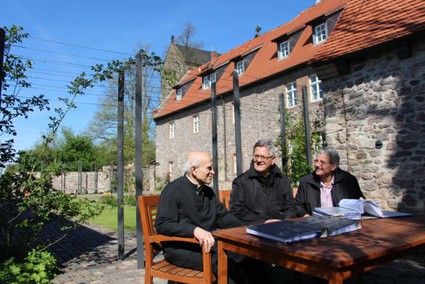
The abbey on Petersberg has become popular among day-trippers
- by Bianca Kahl -
A church that's always open. A pear tree that grows out from the rocks. A place where clocks tick slower.
The cook at Petersberg Abbey walks out into the herb garden to cut some fresh mint for lunch. Meanwhile, Jochen Heyroth, Siegfried Winkler and Brother Johannes Wohlgemuth settle down at a small table in the shade. Jochen Heyroth has brought along some thick files. He was the chairman of the Kirchliche Stiftung Petersberg (Petersberg Clerical Foundation) for ten years. This year, he bids this important honorary office farewell and hands over his duties to retired pastor Hanna Manser. There are a few things that still need to be discussed with the two other board members.
They have already achieved a lot to conserve the 800-year-old abbey church St. Petrus, the centrepiece on Petersberg. But much work still lies ahead of them. "Take a look around; until recently this was a ruin," says Brother Johannes. At the time the current prior followed the call of Petersberg in 1999, together with the other brothers of the Communität Christusbruderschaft, he first had to warm up to the place. The buildings of the old abbey were in ruinous disrepair; work first began with restoring the historic rectory in order to create some living space for the brothers on the ground floor. From there, the men slowly prepared the groundwork and also offered worship service and other events at the same time.
"This is such a special place," says Jochen Heyroth. "You always have to be prepared to maintain and conserve it." In the meantime, around 50,000 visitors come to Petersberg every year. The brotherhood attracts these visitors with a number of events – from concerts and readings, through to fasting and retreat days, and pastoral seminars. Daily prayers are held in the church. In the simply furnished hermitage (a small, separate building), visitors can retreat from everyday life for a few days and take part in abbey life if they so wish. There are also six double rooms in a newly built guesthouse.
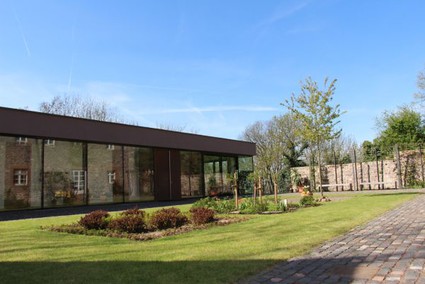
Yet many visitors simply come out of curiosity to look at this regionally and culturally important place with their own eyes and experience the unique atmosphere for themselves. The abbey church is an unmistakeable landmark of the northern Saalekreis district. Even in GDR times pilgrims would visit Petersberg Abbey. Every year on the Sunday after Ascension Day, there used to be a large Christian youth gathering here.
Today the whole area around Petersberg is a local recreation area for the people living in Halle (Saale) and the surrounding region. The beautiful scenery is a wonderful place to go on walks and relax. A wildlife park, a forest park, the Bismarck tower and a museum for regional history are popular among day-trippers. Many of these attractions have been supported with EU funding as LEADER projects of the local action group 'Unteres Saaletal und Petersberg'
Petersberg Abbey itself has also benefited from the European Agricultural Fund for Rural Development (EAFRD): Petersberg Clerical Foundation received around 76,000 euros in 2012. For a total of 160,000 euros, the foundation was able, for instance, to repave the forecourt to the visitor information centre with natural stone and design the courtyard between the historic rectory and the newly built guesthouse.

Brother Johannes Wohlgemuth and Siegfried Winkler take one last walk through the site together with Jochen Heyroth. They look out onto the 'Glaube-Liebe-Hoffnung' (faith, love, hope) fields, a design feature in the middle of the beautiful new garden. The field that depicts love is planted in red, while 'hope' gleams in lucid green. On the 'faith' field, a small tree grows out from the stony ground – a wild pear tree.
The historic rectory is reflected in the windows of the modern guesthouse. "It looks like a cloister," explains Heyroth, clearly proud of what they have achieved here. At that moment, a man sits himself down on a park bench, seemingly lost in thought. He doesn't appear to notice the three men, only the nature around him. He is attending one of the pastoral seminars and is currently on lunch break.
It's now time for Brother Johannes to hold the midday prayer in the basilica. The small congregation accompanies him through the narrow passageway into the impressive galley of the national cultural monument. "Our abbey church is always open. For anyone," says Brother Johannes as he dons his white robe. He begins the prayer song. The voices resound through the high-ceilinged room and the group pauses for a moment. The men then cast an expert eye around and see what the other guests fail to notice: there's a lot of work still to be done here. The roof truss has only just been renovated; this year the tower will be reroofed. The beautiful church is expected to be fully renovated by 2020.
The spiritual programme can be found here: http://christusbruderschaft.de
Find out upcoming events here: www.petersberg-freundeskreis.de








